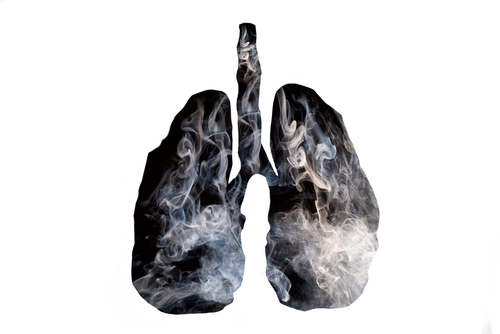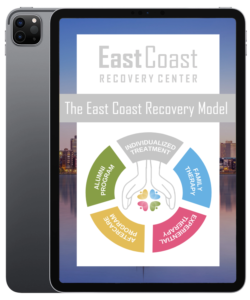According to the National Institute on Drug Abuse, the percentage of college students who vaped marijuana rose 8.8% from 2014 to 2019, going from 5.2% to 14%. This sharp increase in people using vape pens showcases the importance of understanding the safety of these devices. Many people may question, “Are disposable weed pens safer than smoking?” This article aims to answer that question and expand on the dangers of weed pens and smoking while looking at the differences between the two.
If you find that you are unable to control or cut back on your marijuana use and need support, East Coast Recovery offers marijuana addiction treatment programs. Reach out today to learn more about how we can help.

What are Weed Pens?
Weed pens, also known as vape pens, cannabis vape pens, or e-cigarettes, are portable devices used for vaporizing and inhaling cannabis products. Due to their convenience and easy-to-use nature, vape pens have gained popularity in recent years, especially among young adults.
Weed pens typically consist of a battery, a heating element, and a cartridge that can hold the cannabis concentrate or oil. Vape pens work by the battery powering the heating element, which vaporizes the concentrate or oil, allowing the user to inhale the vapor, also called the aerosol. The cartridges can be filled with various types of cannabis, including THC (tetrahydrocannabinol), CBD (cannabidiol), or a combination of both.
Connect With Us Now
Reach out to us now for immediate support, or let us know the best time to contact you through our confidential callback service. Your journey to healing is just a conversation away.
What is THC & CBD?
THC, or tetrahydrocannabinol, is a psychoactive component and cannabinoid seen in cannabis. CBD, or cannabidiol, is also a psychoactive component and cannabinoid in cannabis, making these two the primary ingredients seen in vaping products. THC and CBD can have varying effects on the body, leading to cannabis users having a preference in what kind of vape pen they use.
To learn more about the effects of marijuana, read here.
Types of Vape Pens
For those who use vaping devices, you may have noticed that there are various types of vape pens available. These are designed for specific purposes and substances, however, the primary function and how they operate remain mostly the same. Some of the most common types of vape pens include:
- Dry Herb Vape Pens: Dry herb vape pens are designed to do precisely as it seems, vaporize the dry herb to create a substance to be inhaled. The dried herbs are typically cannabis flower or other botanical herb blends, such as lavender. These vape pens offer a way to smoke marijuana without the risk of combustion and a lower risk of lung damage.
- Oil Vape Pens: Oil vape pens operate similarly to dry herb vape pens; however, this involves vaporizing the oil concentrate. These pens will feature a tank to contain the oil that is then heated by a coil to convert it into a vapor that can be inhaled. The oils in these pens are cannabis oil extracts, like THC or CBD.
- Wax Vape Pens: Wax vape pens, also known as dab pens, are designed to vaporize highly concentrated cannabis products. These pens work the same as a dry herb pen or oil pen, but due to the high concentration of cannabis in these pens, they are known for delivering potent vapor to the user.
- Disposable Weed Pens: Disposable vape pens are designed to be pre-filled, single-use devices that are filled with e-liquid, oil, or distillate. These types of vape pens are increasing in popularity due to their simplicity and portability.
- E-Cigarettes: E-cigarettes, also known as electronic cigarettes or e-cigs, are designed to vaporize nicotine products. However, they operate in the same way as marijuana vape pens. E-cigarettes are typically used as a way to transition from traditional cigarettes to a potentially less harmful alternative.
Take Our Addiction Quiz For Recovery Insights
Are Disposable Weed Pens Safe?
All vaping comes with risks. However, there’s a higher risk of using disposable weed pens since they’re convenient but also contain too many unknowns. Some of these potential risks include:
- Adulterants: The Centers for Disease Control and Prevention (CDC) has determined that vitamin E acetate is likely the leading cause of concern in any vaping-related lung injury. Vitamin E acetate was found in 29 fluid samples tested by the CDC, and it is a common additive in THC cartridges.
- Quality and Safety: The safety of vaping products can vary significantly due to factors such as product quality, manufacturing standards, and ingredients. Since these products are not regulated by the Food and Drug Administration (FDA), there is no way to be sure what is within the product. Many may contain contaminants such as pesticides, heavy metals, or chemical additives that can cause additional negative health effects.
- Addiction Potential: While marijuana is not as addictive as other substances, chronic and repeated cannabis use can result in the development of cannabis use disorder. As disposable weed pens are meant to be portable and barely noticeable, this can lead to young adults becoming addicted to using vape pens often. As disposable weed pens typically use a higher potent form of cannabis, users can have a significant tolerance build-up, causing them to use the pen more frequently.
- Battery Safety: As you now know, disposable weed pens are powered by a battery to heat and vaporize the cannabis product. However, there have been increasing reports of vapes exploding or causing burn injuries to users due to battery failure. According to the US Consumer Product Safety Commission, an estimated 2,035 vape pen explosion and burn injuries occurred from 2015 to 2017.
The Health Effects of Vaping
While disposable weed pens and vaping marijuana are generally seen as “better” alternatives to smoking cannabis, there are still some major health risks associated with vaping in general. The most common effects of vaping individuals experience include:
- Respiratory Damage: While not as severe as smoking, vaping can still cause damage to the respiratory system. Lung damage, coughing, lung disease, and throat irritation are common symptoms that follow vape use.
- Psychoactive Effects: Since THC is one of the primary components of marijuana, many users will feel the psychoactive side effects of vaping marijuana. These effects can vary, including relaxation, euphoria, impaired cognitive function, and memory loss.
- Cardiovascular Damage: Vaping of any kind can cause an increase in heart rate and blood pressure, resulting in cardiovascular problems. New evidence also suggests that vaping may contribute to an increased risk of cardiovascular diseases.
- Unknown Long-Term Effects: Vaping is a relatively new phenomenon, with it gaining the most popularity in the last 5 years. Because of this, the long-term health effects have not been thoroughly researched, leading to the risk of unknown health problems and diseases.

Marijuana Addiction Treatment at East Coast Recovery
If you find yourself or a loved one using weed pens to get high often, you may be experiencing marijuana addiction. By understanding the impact of using vape pens and how it differs from smoking, you can prevent significant health risks from occurring.
At East Coast Recovery Center, we aim to provide you with a safe and comprehensive treatment plan to address every aspect of marijuana addiction. Our treatment is individualized, holistic, and experiential due to our various treatment therapies offered. We aim to address the underlying causes of addiction, develop coping skills, and encourage long-term recovery.
If you or a loved one are struggling with addiction, contact us today to learn more about our treatment programs. East Coast Recovery can provide the guidance and care needed to begin the path toward recovery.
Are You Covered For Treatment?
East Coast Recovery Center partners with numerous private insurance providers. Our team is committed to assisting you in quickly and effortlessly verifying your insurance coverage for treatment.










